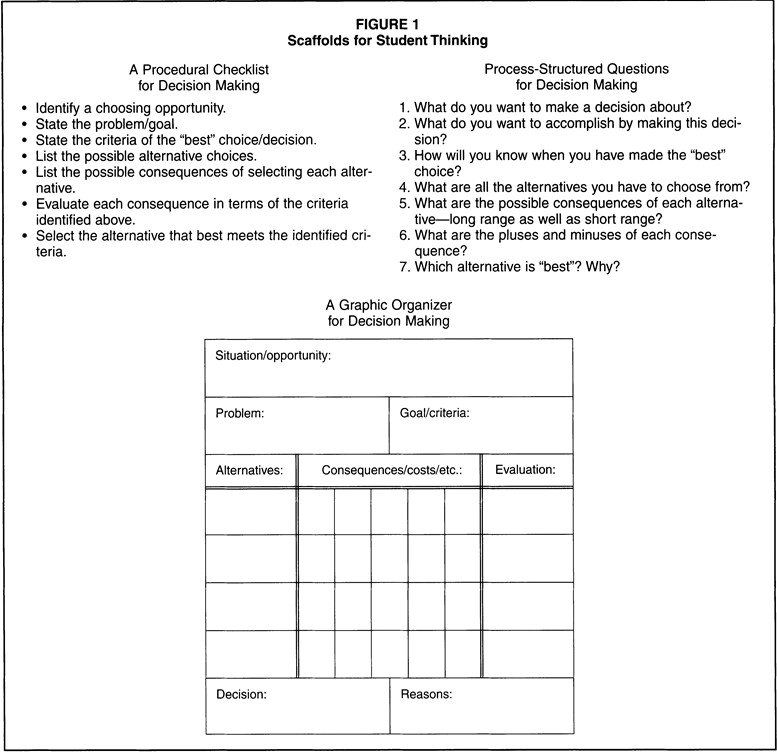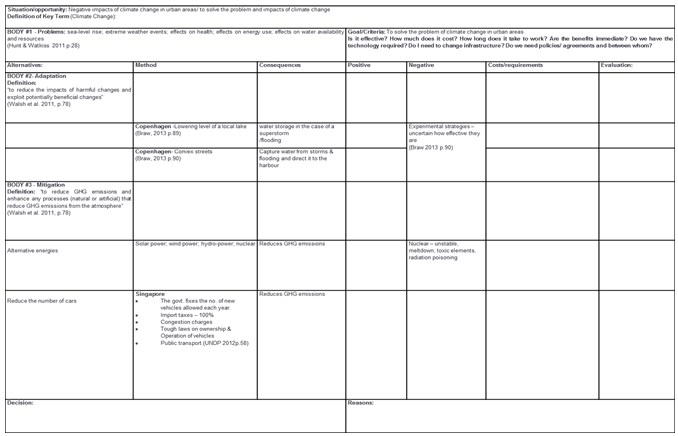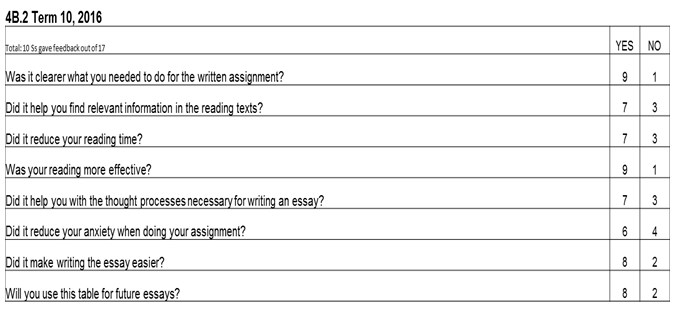- Home
- Various Articles - Adult/Writing
- Using Questions to Enhance Critical Thinking in Academic Writing
Using Questions to Enhance Critical Thinking in Academic Writing
Giselle Carnemolla has been an EFL practitioner and trainer for 20 years. She began teaching EAP at UTS Insearch (University of Technology Sydney) in 2008 and then worked on a curriculum review in 2011, setting up the independent learning stream. Previously she worked on a curriculum team at the University of New South Wales. At the British Council in Milan she established the framework for business English Courses. Her interest in learner autonomy and critical thinking has led her to continue her studies in Educational Psychology at the University of Sydney.
Introduction
According to current cognitive load theory, the complexity of academic literacy and critical thinking should not be underestimated. In fact, it has become ever more important for ELT practitioners to further consider modes of enhancing these academic skills due to the increasing internationalization of education. This paper will discuss the complexity of academic English by exploring concepts of the culture of critical thinking; the relationship between language and cognition; the benefits of scaffolding cognitive models through questioning; the relevance to teaching thinking skills; and cognitive load concerns in order to make more effective the delivery of academic English courses.
The culture of critical thinking
Critical thinking is considered a central concept for academic success in Australian universities. Yet the definition of critical thinking still remains elusive and vague at best, making the teaching of critical thinking problematic (Egege & Kutieleh, 2004, p.79). The National Council for Excellence in Critical Thinking Instruction (Scriven & Paul, 2003 cited in Egege & Kutieleh, 2004, p.78) defines critical thinking as “the intellectually disciplined process of actively and skillfully conceptualizing, applying, analyzing, synthesizing or evaluating information gathered from or generated by, observation, experience, reflection, reasoning, or communication as a guide to belief or action.” Egege and Kutieleh (2004, p.79), however, argue that what Western academics deem as universal tools of reasoning are, in fact, representative of a culture unto itself.
It is a commonly held belief amongst academics that International students show little use of critical thinking skills in their studies. This belief is demonstrated by Samuelowicz’s (1987 cited in Watkins et al., 1991, p.21) survey of 145 lecturers in an Australian university, of which over one-third of academic staff felt that international students employed a surface approach to their studies. Yet research (Saljo 1979; Perry 1988; Marton, Dall’Alba and Beaty 1993; King and Kitchener 1994; Kember 1997 cited in Durkin, 2008, p.18) has demonstrated that western undergraduates also undergo a gradual transformation in their epistemological stances. These studies show that the process of acculturation to the Australian university context begins with the general view that knowledge is absolute and authoritarian and gradually transforms to the view that it is formed through “problem-solving enquiry, based on contextual evidence” (Durkin, 2008, p.18). If this is the case, then academic English courses should not only address the linguistic features of academic writing, but also aid students in their transition into the specific culture of knowledge found within the Australian university context.
The role of language
“Thought is not merely expressed in words; it comes into existence through them.”
(Vygotsky, 1962, p.125)
Kern (2000, cited in Scarcella, 2003, p.10) states that academic English literacy consists of three dimensions: linguistic, cognitive and sociocultural/psychological. This description of the dimensions involved significantly coincides with Perlovsky’s proposed theory of the “Dual Model”, where “Language and cognition are separate [but] evolve jointly” (Perlovsky, 2009, p.252). Although Perlovsky acknowledges that there is a lack of experimental evidence, he points out that Franklin et.al (2008, Perlovsky, 2009, p.252) conducted experiments which indicate that neural connections exist between perception and language, thereby providing a foundation for the Dual Model. Perlovsky (2009, p.252) proposes that language models are formed through verbal interactions between people with the aim of mutual understanding. Thus, these language models not only “guide the development of the content of cognitive models …”, but also, “tend to hide cognitive contents from consciousness”. This would mean that “cognitive concepts are predetermined by [the] language” in which the individual operates, and in turn, would “unconsciously influence entire cultures”. (Perlovsky, 2009, p.254)
Therefore, the Dual Model could explain why comparative linguists note structural differences in essays between Confucian-heritage culture and the Western academic culture (Ballard & Clanchy 1984; Ginsberg 1992 cited in Biggs, 1994, p.58). Given the duality between cognitive and linguistic frameworks, it could be argued that it is not enough to analyse the linguistic features of academic English as a means of introducing students to academic genres, but rather, in addition, it is necessary to analyse the cognitive models that underlie the discourse.
Using questions in the classroom
Langer and Applebee (1986 cited in Olson & Land, 2007, p. 274) argue that teachers should ensure the visibility of underlying cognitive strategies used in reading and writing, so that students may internalize them and ultimately perform complex tasks independently. Therefore, students must be provided with productive learning tasks which engage them in critical thinking by framing lessons and assignments around thoughtful questions, making possible the generation of new knowledge (Beyer, 1997, p.262). Beyer (1997, p. 263) defines ‘thoughtful questions’ as those which “stimulate thinking and trigger additional related questions”. It is through such questions that students are required to implement critical thinking sub-skills, such as defining terms, posing hypothesis, assessing and generating/evaluating conclusions and arguments based on pre-existing knowledge. In fact, there is strong agreement amongst the academic community that the teaching of cognitive and metacognitive processes, through modelling and scaffolding, is essential for developing students’ abilities to independently select and implement such strategies in their studies (Olson & Land, 2007, p.274).
Relevance to the teaching of thinking skills
By continuously and explicitly engaging students in the cognitive skills required in academia through activities that encourage metacognitive reflection, research has demonstrated that students obtain higher grades in their subject matter as a result of their improved thinking skills (Estes 1972 cited in Beyer, 1997, p.267). However, students need to be conscious of the thinking skills employed and be able to compare them to those of the ‘expert’. McTighe and Lyman (1988 cited in Beyer, 1997, p.265) recommend the use of graphic organizers to both present and activate the steps in a specific thinking operation (See: Figure 1 below).

Through the use of model essays it is possible to model the thinking process that the language reflects. Students may then attempt to apply the modelled procedure with guidance. According to research, this may have an additional benefit of motivating students to learn this new skill at a time when they perceive it necessary and yet realize their inability to implement it effectively and independently (Sigel 1984 cited in Beyer, 1997, p.266). By simultaneously and explicitly providing students with both cognitive and language models, students will be encouraged to generate their own questions, which will ultimately aid them in writing for an academic audience.
Cognitive load concerns
It could be argued that as a result of the dual nature of language and cognition that while genre analysis of academic writing is presented as a worked example in terms of its discourse analysis and linguistic features, it is in fact a molar example, defined by Sweller (2006, p.168) as “one in which a largely formula based solution is provided and students need to learn how and when to use the formula”, as the cognitive and sociocultural/psychological dimensions are not explicitly scaffolded. Therefore, by posing questions to make visible underlying cognitive strategies and sociocultural/psychological beliefs and behaviours reflected in the language of academic discourse, a comprehensive modular example would be recommended in order to reduce intrinsic cognitive load in a subject which essentially has high element interactivity.
Sweller (2010, p.124) defines high element interactivity material as that which “consists of elements that heavily interact and so cannot be learned in isolation”. Given the linguistic, cognitive and sociocultural/psychological dimensions of academic English, such courses could be defined as complex, multi-goal learning environments. Academic English involves problem-based learning where students need to “formulate learning issues that they then need to answer by studying various literature sources [which] includes presenting a problem scenario, initial discussion, self-study and reporting (Schmidt et al. 2007; Wijna et al. 2014 cited in Kalyuga & Singh, 2015, p. 13). The numerous learning activities in academic English have “different goals that could be different from the immediate acquisition of domain-specific schemas” (Kalyuga & Singh, 2015, p.4), i.e. language. Yet, a traditional Cognitive Load framework would dictate that any instruction that is not relevant for acquiring a domain-specific schema is responsible for generating extraneous cognitive load. However, the micro-level sub-tasks necessary for the acquisition of academic English may be considered an intrinsic load depending on their specific instructional goal. According to Kalyuga and Singh (2015, p.8), “the task of managing this [cognitive] load belongs to a micro- rather than a macro-management of tasks”. Therefore, it is essential to consider the sequencing of such subtasks, as each of them influences the working memory operation over the duration of the course in an accumulative manner (Kalyuga & Singh, 2015, p.8). Consequently, optimal levels of guidance need to be investigated for specific sub-task activities according to their goals and their sequencing.
Practical Implications
A comprehensive modular example which included a graphic organizer was used to make visible the underlying cognitive strategies and sociocultural/psychological beliefs on a recent academic English course. The main aim of the course was to teach students how to write a problem-solution essay on the topic of environmental problems based on a number of articles read. The graphic organizer asked students to name and describe the problems along with their impacts. Students then had to name potential strategies, how they would be implemented, the necessary costs and requirements as well as their expected impacts. Finally, students were required to establish criteria in order to evaluate the best possible solution before making their decision. Below is an example of work completed in class.

Teacher observations
Throughout the course, the teacher noted an increase in critical thinking made evident from task responses and student questions. Motivation increased as predicted by Sigel (1984, cited in Beyer, 1997, p.266) as students perceived the skills necessary at the time when such skills were required of them. Students adhered to the drafting process in a timely manner and demonstrated increased autonomy. In addition, attention could be drawn to poor study skills, for example, note-taking, which became increasingly more relevant to students’ needs. Most interestingly to note was the fact that the final essays showed greater variety of content and moved away from formulaic responses. Overall, it appeared that students had greater grasped the purpose of academic writing and its features.

Student feedback
Upon the completion of the course, students were asked to complete a survey in order to gain some insight into the students’ perception of the effectiveness of this teaching technique. As seen from the summary below, the majority of students found the use of the cognitive graphic organizer to be helpful in terms of clarity of the task, time management and, the thought processes which underlie the writing process. In addition, students felt less anxious about the writing task and claimed they would be willing to continue to use such an organizer in their future studies.


Conclusion
In conclusion, academic English is a complex and multi-goal learning domain, where linguistic, cognitive and sociocultural/psychological dimensions need to be explicitly modelled and scaffolded. Whereas current ESL academic English pedagogical practices commonly focus on the linguistic dimension of academic literacy, a more holistic approach, needs to be established to include both the cognitive and sociocultural/psychological dimensions that underlie language usage in order to better prepare international students for academic success in the Australian university context. This could be achieved by posing questions to make visible the underlying cognitive strategies employed, reducing intrinsic cognitive load in a subject which has high element interactivity. The use of graphic organizers can aid this by both presenting and activating the steps involved in specific thinking operations, with the ultimate goal of encouraging student autonomy in this cognitive model.
In practice, it has proven successful with a limited number of students and is worth considering integrating into existing curriculum in order to make it more comprehensive of students’ needs. Once a more comprehensive curriculum is designed, optimal levels of guidance need to be examined for specific sub-task activities and their sequencing, taking into consideration possible expertise reversal effects at various levels of student development.
References
Barton, E. (1993). Evidentials, argumentation, and epistemological stance. College English, 55 (7), 745-769.
Beyer, B. (1997). Improving student thinking. The Clearing House, 71(5), 262-267.
Biggs, J.B. (1994). Asian learners through western eyes: an astigmatic paradox, Australian and New Zealand Journal of Vocational Education Research, 2(2), 40-63.
Biggs, J.B. (1988). The role of metacognition in enhancing learning. Australian Journal of Education, 32(2), 127-138.
Bowen, W. & Shwartz,M. (2005). The chief purpose of universities: academic discourse and the diversity of ideas. Lewiston, N.Y.: The Edwin Mellen Press.
Durkin, K. (2008). The adaptation of East Asian masters students to western norms of critical thinking and argumentation in the UK. Intercultural Education, 19(1), 15-27. doi:10.1080/14675980701852228.
Egege, S. & Kutieleh, S. (2004). Critical thinking: teaching foreign notions to foreign students. International Education Journal, 4(4), 75-83.
Kalyuga, S. & Singh, A. (2015). Rethinking the boundaries of cognitive load theory in complex learning. Educational Psychology Review. doi:10.1007/s10648-015-9352-0
Olson, C.B. & Land, R. (2007). A cognitive strategies approach to reading and writing instruction for English language learners in secondary school. Research in the teaching of English, 41(3), 269-303.
Perlovsky, L. (2009). Language and cognition. Neural Networks, 22, 247-257.
Richards, J. C. & Miller, S.K. (2005). Doing academic writing in education: connecting the personal and the professional. New Jersey: Lawrence Erlbaum Associates.
Scarcella,R. (2003). Academic English: A conceptual framework. UC Berkeley: Minority Research Institute, Technical Report 2003-1. Retrieved August 8, 2016, from http://escholarship.org/uc/item/6pd082d4 on 08/08/16
Sweller, J. (2006). The worked example effect and human cognition. Learning and Instruction. 16(2), 165-169. doi:10.1016/j.learninstruc.2006.02.005
Sweller, J. (2010). Element interactivity and intrinsic, extraneous, and germane cognitive load. Educational Psychology Review, 22, 123-138. doi:10.1007/s10648-010-9128-5
Vygotsky, L.S . (1962). Thought and language. Massachusetts: MIT Press.
Watkins, D., Reghi, M., & Astilla, E. (1991). The-Asian-learner-as-a-rote-learner stereotype: myth or reality? Educational Psychology, 11(1), pp. 21-34. doi: 10.1080/0144341910110102
Please check the English Language course at Pilgrims website.
Please check the Teaching Advanced Students course at Pilgrims website.
Please check the 21st Century thinking Skills course at Pilgrims website.
Collaborative Writing for Academic English
Jonathan Collett, AustraliaUsing Questions to Enhance Critical Thinking in Academic Writing
Giselle Carnemolla, AustraliaThe Roger Federer Club* – or How Extensive Writing Can Help Language Students
Vahida Berberovic and Ann-Charlotte Stent, AustraliaImproving Grammatical Accuracy in the Writing of Pre-intermediate Students
Jeff Millar, Australia